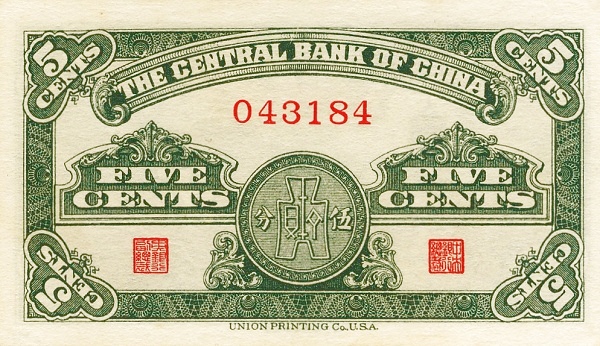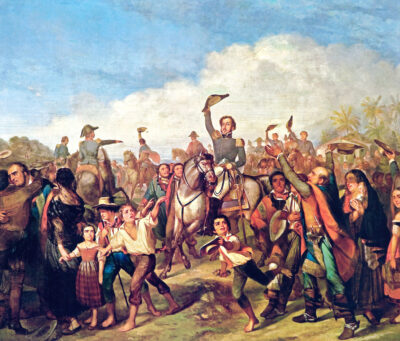The real reward for a loan shark is what the victim will have to cough up once they realize they cannot pay up what they owe. China is a seasoned loan shark. One instance where the gravity of the nation’s Belt and Road Initiative: the infamous international lending program focused on cultivating political influence within countries by ensnaring them in debt made itself painstakingly clear was in 2015, when Sri Lanka, after failing to repay an already dubious loan that the state-owned China Harbor Engineering Company financed, simply gave Beijing the Hambantota Port, a critical trade hub and a powerful geopolitical bargaining chip. [1] Since then, countries like Kenya, Pakistan, and others have also been caught in the web.
Our financial supervillain has made an entrance, so we wait for the hero to enter, right? Not exactly. Despite the United States presenting itself as the surest hope for deterring Xi Jinping’s expansionism, we seem to have gotten stuck in our tights. The problem is that American hawks have grown complacent with the myth that coercion is the best antidote to China’s growth, dumping money to display military might overseas rather than challenging Beijing where it truly excels-in powerfully deploying capital internationally.
In 2019, American military spending was $732 billion, almost three times that of China, the second biggest defense spender. [2] We maintain 800 military bases overseas. [3] China hosts only one, [4] and yet still cements its political grip wherever Beijing chooses to invest. To counter Chinese expansion, the United States must directly combat the Belt and Road Initiative, leveraging its role as a leader in the liberal world order to create an aggressive international economic program of its own.
The United States is already poised to do this – in addition to its tremendous production capacity and financial standing, the nation has, for the most part, properly established itself as one of the foremost patrons of globalism and economic interdependence since the post-war era. Whether kickstarting the General Agreement on Tariffs and Trade (GATT) in 1947 (and its successor, the World Trade Organization, in 1995), or bringing the International Monetary Fund (IMF) to life in 1945, the United States has played a pivotal role in leading the growth of international economic relationships. After a period of rhetorical protectionism under President Trump, the Biden administration has been keen to return to a posture of economic re-engagement with the world. [5] The United States can utilize this historically-endowed position of global leadership against China: but how?
International relations theorist Robert Gilpin suggests that states seek to be “economic hegemons” in order to determine the nature of the global political economy over which they would preside. [6] Xi Jinping’s program strives to do exactly this by means of controlling nations vis-à-vis their debt towards China, making the country the de facto financial hub of most of the eastern hemisphere. Moreover, market analysts argue that Biden’s predictably less aggressive stance towards Beijing signals an increase in the value of its currency, the Chinese yuan. [7] Moreover, Xi’s administration seeks to undermine the U.S. dollar’s status as a vehicle currency (an asset that is so reliable that entities use it as a standardized trading tool) by creating a digital currency & electronic payment system (DCEP) backed by China’s central bank. [8] With all of this in mind, it seems as though China’s strength is in its finance. This is where the United States can, and should, effectively strike, by acting as a financier in its own right.
American policymakers might consider fighting fire with fire, allocating much more substantial capital toward programs providing direct loans to countries that desire to start domestic infrastructure projects. These loans should have lower interest rates than the loans provided by China’s state-owned entities, incentivizing nations on the fence between American and Chinese spheres of influence to either stay within or move into the dollar-system’s financial orbit.
The good news is that countries prospering under the international economic system bolstered by American leaders – such as those within the E.U. – are open and willing to reduce their financial dependence on Chinese lenders, wary of their growing financial grip. [9] The United States has been doing the legwork for the past 70 years, and the stars seem to be aligning to tackle the Belt and Road Initiative. American policymakers must fully realize the United States’s crucial dual role in the international sphere – not just as a military power, but as a geo-economic leader, too. In this way, the United States can bend China’s greatest strength back against itself, proving to the world that a policy of predation cannot outmatch the ability to finance a freer world.
Karan Balaji is member of the AHS Chapter at Georgetown University’s Edmund A. Walsh School of Foreign Service, where he studies international political economy.
—
Notes:
[1] Maria Abi-Habib, “How China Got Sri Lanka to Cough Up a Port,” The New York Times. 25 June 2018, https://www.nytimes.com/2018/06/25/world/asia/china-sri-lanka-port.html.
[2] “SIPRI Military Expenditure Database,” (Stockholm: Stockholm International Peace Research Institute, 2020) https://www.sipri.org/databases/milex.
[3] Vine, David, “Where in the World Is the U.S. Military?” POLITICO Magazine, August 2015, http://www.politico.com/magazine/story/2015/06/us-military-bases-around-the-world-119321.
[4] Rayan V. Bhagwagar, “China’s Overseas Military Bases,” Modern Diplomacy, 30 August 2020, https://moderndiplomacy.eu/2020/08/31/chinas-overseas-military-bases/.
[5] “Biden promises to re-engage the US with the world in upcoming G7 meet,” Al Jazeera, 15 February 2021, https://www.aljazeera.com/economy/2021/2/15/biden-to-re-engage-with-the-world-with-the-upcoming-g7-meeting.
[6] Robert Gilpin, “The Nature of Political Economy” from International Politics: Enduring Concepts and Contemporary Issues, ed. Robert J. Art and Robert Jervis, 13th ed., (Boston: Pearson Education, 2017), 284.
[7] Chong Koh Ping, “China Taps the Brakes on a Yuan Rally,” The Wall Street Journal, 12 October 2020, https://www.wsj.com/articles/china-taps-the-brakes-on-a-yuan-rally-11602493380.
[8] Hal Brands, “Dollar Beware,” American Purpose, 13 January 2021, https://www.americanpurpose.com/articles/dollar-beware/.
[9] Drew Hinshaw, Sha Hua, and Laurence Norman, “Pushback on Xi’s Vision for China Spreads Beyond U.S,” The Wall Street Journal, 28 December 2020, https://www.wsj.com/articles/pushback-xi-china-europe-germany-beyond-u-s-11609176287.
Image: “A banknote issued by the Central Bank of China while the Republic of China still administered the Chinese Mainland”, retrieved from http://www.banknote.ws/COLLECTION/countries/ASI/CIN/CIN-REP-CIN/CIN-REP-CIN-04.htm#CIRCULATING, image is in the public domain.



